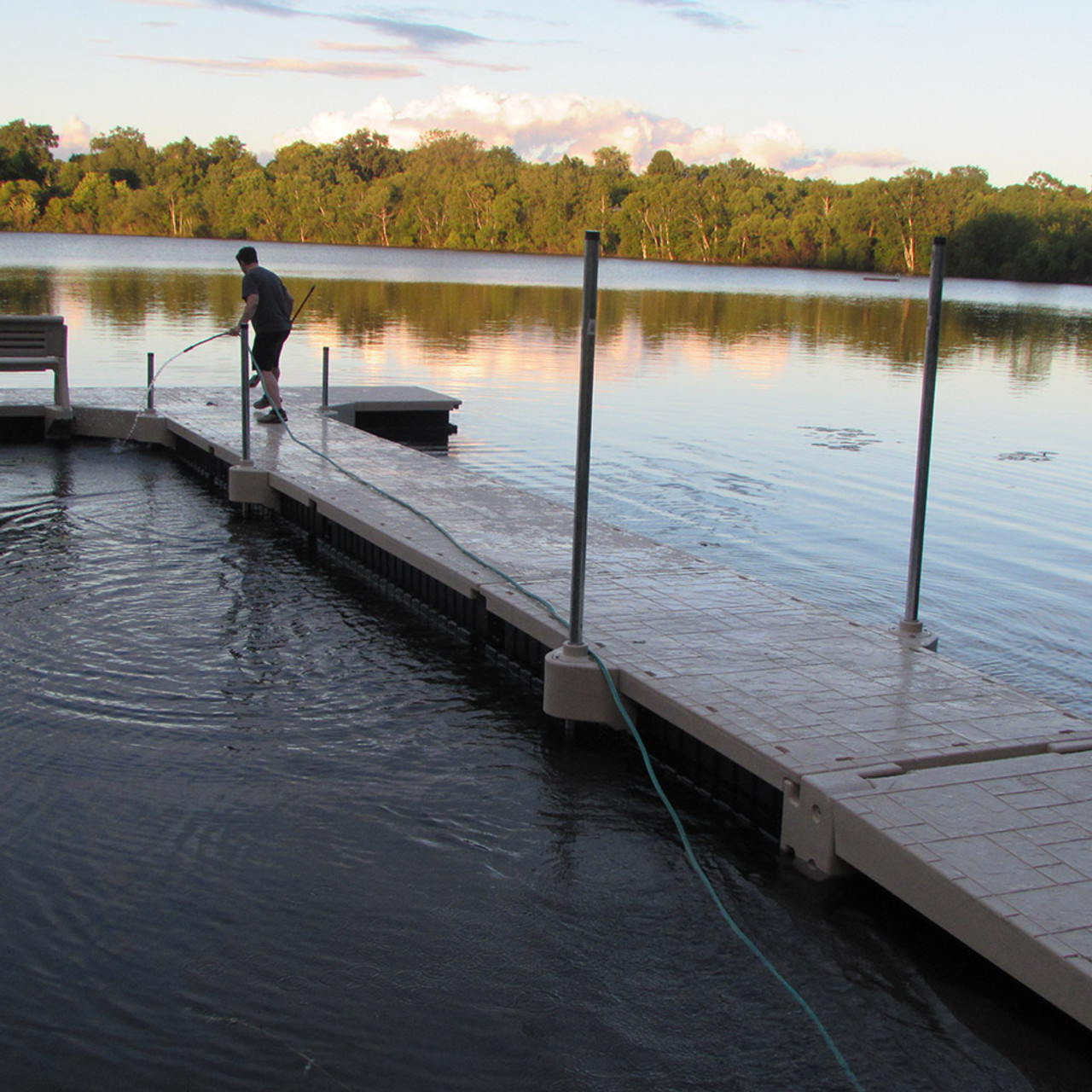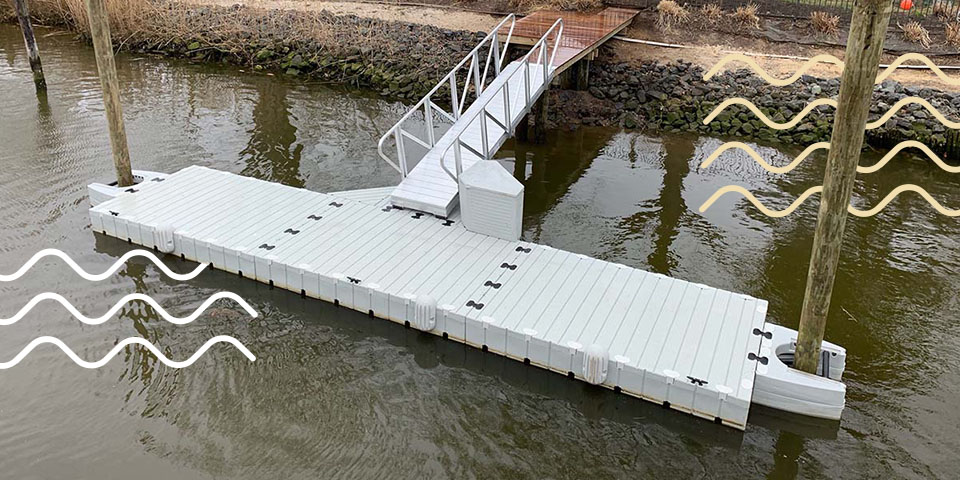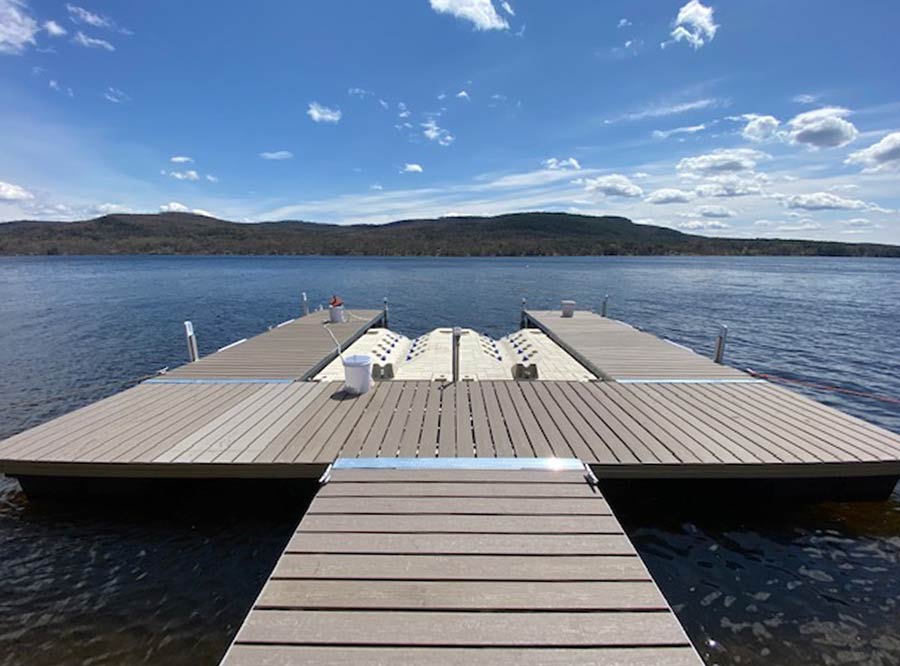The Ultimate Guide to Choosing the most effective Floating Docks
Selecting the suitable floating dock needs a comprehensive understanding of various components that affect both efficiency and durability. Elements such as dock kinds, materials, and essential attributes substantially influence your decision-making process.
Understanding Floating Dock Types
When choosing a floating dock, it is vital to comprehend the different kinds readily available, as each serves distinctive objectives and applications. Floating docks primarily come under 3 classifications: modular, fixed, and pontoon docks.
Modular docks are made up of individual sections that can be conveniently put together or reconfigured, making them ideal for altering water degrees and varied uses, such as entertainment activities or industrial procedures. Their flexibility enables for customization based on details needs.

Pontoon docks are defined by their buoyant framework, commonly composed of numerous pontoons that supply stability and assistance. They are particularly fit for bigger vessels and are typically made use of in marinas or for waterside residential properties. Comprehending these kinds aids in selecting one of the most appropriate floating dock to satisfy particular demands, making certain ideal functionality and safety.
Trick Materials for Longevity
Picking the ideal materials for floating docks considerably influences their sturdiness and durability. One of the most usual products consist of wood, plastic, metal, and composite materials, each offering distinct advantages and restrictions.
Wood, usually favored for its visual allure, requires regular maintenance to hold up against moisture and decay. Pressure-treated lumber can improve resistance to rot, yet it might still be vulnerable to bugs and weathering.

Plastic docks, constructed from high-density polyethylene (HDPE), are immune to rust, UV radiation, and impact, making them a preferred option for coastal settings. Their lightweight nature also facilitates simple installation and moving.
Metal docks, usually constructed from light weight aluminum or galvanized steel, offer extraordinary strength and durability. They are immune to corrosion, especially when dealt with, yet might need extra insulation to avoid heat build-up in warm climates.
Composite materials, combining timber fibers and plastics, deliver the advantages of both wood and plastic, withstanding moisture and fading while calling for marginal upkeep. - floating dock builder
Ultimately, the option of materials need to line up with environmental problems, planned use, and upkeep preferences to ensure the floating dock remains practical and aesthetically pleasing gradually.
Vital Features to Take Into Consideration
While the option of materials is critical, thinking about important features for floating docks is equally important to make certain optimal performance and customer complete satisfaction. One crucial feature to analyze is the dock's buoyancy capability, which identifies just how much weight it can support without submerging. floating docks. This is vital for suiting watercrafts, individual boat, and even leisure activities
Additionally, transportability is a significant factor to consider. Relying on your demands, you may want a dock that is easy to transport and dismantle, specifically if you prepare to move it seasonally. Stability is an additional necessary function; a well-designed floating dock ought to reduce movement created by wind and water currents, giving a safe platform for users.
Safety and security attributes, such as non-slip surfaces and rounded sides, are likewise important to stop crashes, particularly in wet conditions. Take into consideration the schedule of accessories, such as cleats, bumpers, and ladders, which can enhance the functionality of your dock.
Installment and Maintenance Tips
Setting up and keeping a floating dock requires careful preparation and attention to information to ensure its durability and optimal efficiency. Begin by choosing an appropriate place that minimizes exposure to solid currents and waves, which can trigger damage. Ensure that the water deepness suffices for see this website the dock's height which it is anchored safely to avoid motion.
Throughout setup, adhere to the manufacturer's guidelines very closely, as inappropriate setting up can compromise stability. Use top quality materials resistant to deterioration, such as light weight aluminum or dealt with wood, to enhance toughness. Routinely check all parts, consisting of drifts, ports, and anchoring systems, for indicators of damage or wear.
Upkeep is critical for extending the life of your dock. Clean the surfaces periodically to avoid algae buildup and check for any loose fittings that may require tightening. Ensure they remain undamaged and complimentary from slits if your dock utilizes flotation tools. In addition, think about applying safety layers to wooden components to lower weathering impacts. By adhering to these installment and upkeep ideas, you can delight in a trustworthy and practical floating dock for many years to come.
Budgeting for Your Dock
Budgeting for your dock is a crucial action that can dramatically influence your total contentment and financial investment in a beachfront property. Developing a clear budget plan aids you browse the different choices readily available and ensures you make educated decisions that line up with your economic abilities.
Begin by establishing the dimension and style of the dock you call for, as these elements will substantially influence the expense. Floating docks can differ significantly in cost, relying on products, buoyancy, and features like accessories and ramps. Study different suppliers and providers to contrast prices and understand the market worth.
In addition to preliminary expenses, take into consideration ongoing costs such as upkeep, insurance coverage, and possible repair services. Designate funds for these recurring costs to prevent shocks down the line. It's additionally sensible to budget for any type of needed authorizations or evaluations, which may be needed by regional guidelines.
Lastly, remember the potential return on investment. A tactical dock can improve your residential or commercial property's value and allure, supplying a positive financial influence in the lengthy term. By budgeting properly, you can guarantee that your dock meets your requirements without compromising your monetary security.
Conclusion
In final thought, choosing the optimal floating dock requires an extensive examination this of different aspects, consisting of dock kinds, products, crucial attributes, and installment procedures. Cautious factor to consider of monetary constraints will further make certain an audio financial investment.

While the selection of materials is important, taking into consideration vital attributes for floating docks is just as essential to make sure optimum performance and customer complete satisfaction.Establishing up and keeping a floating dock needs careful planning and interest to information YOURURL.com to guarantee its durability and optimum performance. Floating docks can vary dramatically in price, depending on products, buoyancy, and features like ramps and devices.In conclusion, choosing the suitable floating dock demands a thorough evaluation of various factors, including dock kinds, materials, necessary attributes, and setup processes.